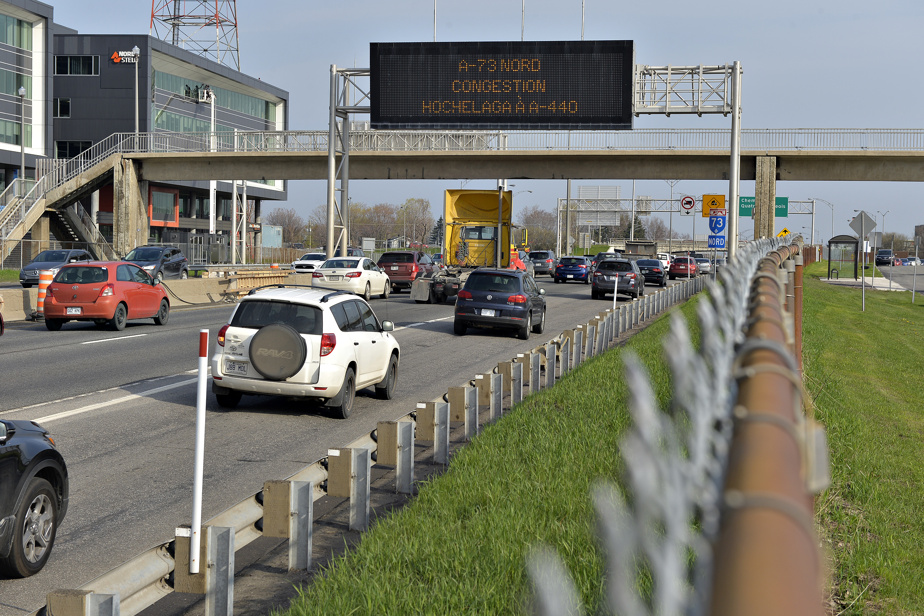(
Quebec) An unprecedented influx of immigrants into the capital makes the construction of a tramway even more necessary, argues the mayor of Quebec. The elected official fears that the population will find itself “stuck in traffic” if nothing is done.
The large number of temporary immigrants arriving in 2023 has had a major impact on Montreal, but also on the capital. The most recent demographic projections, dating from 2022, predicted 560,683 residents in 2023 in Quebec City. However, the latest estimates from the Institut de la statistique du Québec (ISQ) place the population of the capital at 578,593 inhabitants.

“Since temporary immigration was much higher than what had been projected, this gap is observed almost everywhere in Quebec. There is also the fact that the regionalization of immigration (outside Montreal) has accelerated, both for temporary and permanent immigration, which contributes to the increase in Quebec,” explains ISQ spokesperson Chantal Duplain.
The ISQ is preparing to update its demographic projections at the end of September. We will then be able to better measure the long-term impact that this increase in population could have on Quebec cities.
One thing is certain, the difference is significant, particularly in a city like Quebec, which has experienced rather modest growth in recent years.
“There were 16,000 more inhabitants in 2023 in Quebec City and 22,000 in the region. We have never had a year as big as that,” explained the mayor of Quebec City, Bruno Marchand, recently in an interview with The Press.
“If the trend continues, it will exceed all our mobility trends for 2040, when we said there would be 100,000 more trips, and the road network is not ready for that,” added the mayor.

IMAGE PROVIDED BY ALSTOM
Model of the Quebec tramway
The elected official refers to the modeling work done under the administration of Régis Labeaume. The projections of future travel, carried out by the Réseau de transport de la Capitale (RTC), were based on an increase of 57,000 inhabitants by 2036 in the agglomeration of Quebec (which also includes Saint-Augustin-de-Desmaures and L’Ancienne-Lorette).
According to this reference scenario drawn up in 2014, the population of the agglomeration will reach 638,427 inhabitants in 2036. This is the figure which was used to predict 100,000 additional trips.
A scenario that no longer holds water
However, the accelerated population growth of 2023 will disrupt this scenario. Currently, the ISQ estimates that 616,762 people already live in the Quebec City metropolitan area (578,593 in Quebec City, 17,476 in L’Ancienne-Lorette and 20,693 in Saint-Augustin-de-Desmaures).
If the region were to experience growth in 2024 similar to that of 2023, the 2036 population target would almost already be reached. There is no indication that this will happen, but it is clear that growth has outpaced the projections used to predict displacement in 2036.

PHOTO EDOUARD PLANTE-FRÉCHETTE, LA PRESSE ARCHIVES
Bruno Marchand, Mayor of Quebec
Even the most optimistic projections did not see this coming. If we do not make courageous decisions, the world will be stuck in traffic because we did not make courageous decisions.
Bruno Marchand, Mayor of Quebec
The mayor reiterates that the file is now in the hands of the government and CDPQ Infra. The Caisse concluded that it was necessary to set up a tramway in the capital, in a report released last June. This report was also based on demographic projections for 2022, before the significant increase in population that occurred in 2023.
Mayor Marchand expects Quebec to announce the start of work soon. “The Prime Minister [François Legault] said he would go ahead, and I have no reason not to believe his word,” the mayor said.
Lévis also saw its population increase in 2023, which could also give arguments to supporters of the third link. The mayor of Quebec City repeats that he is waiting for the government to present its inter-river highway project before taking a position.
However, growth was lower last year according to the latest ISQ estimates. Lévis would have gained 2,950 inhabitants in 2023, for a growth of 1.9%, compared to 16,709 in Quebec City, or a growth of 3.9%.
